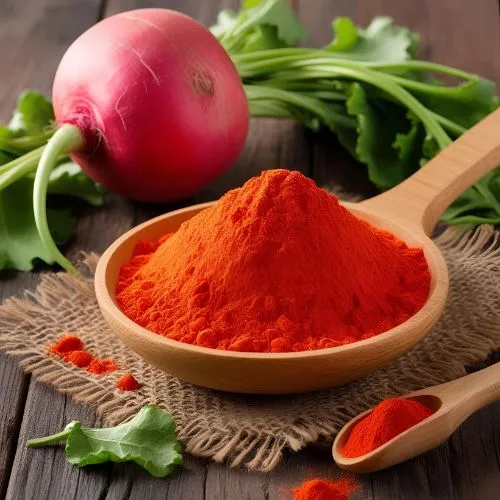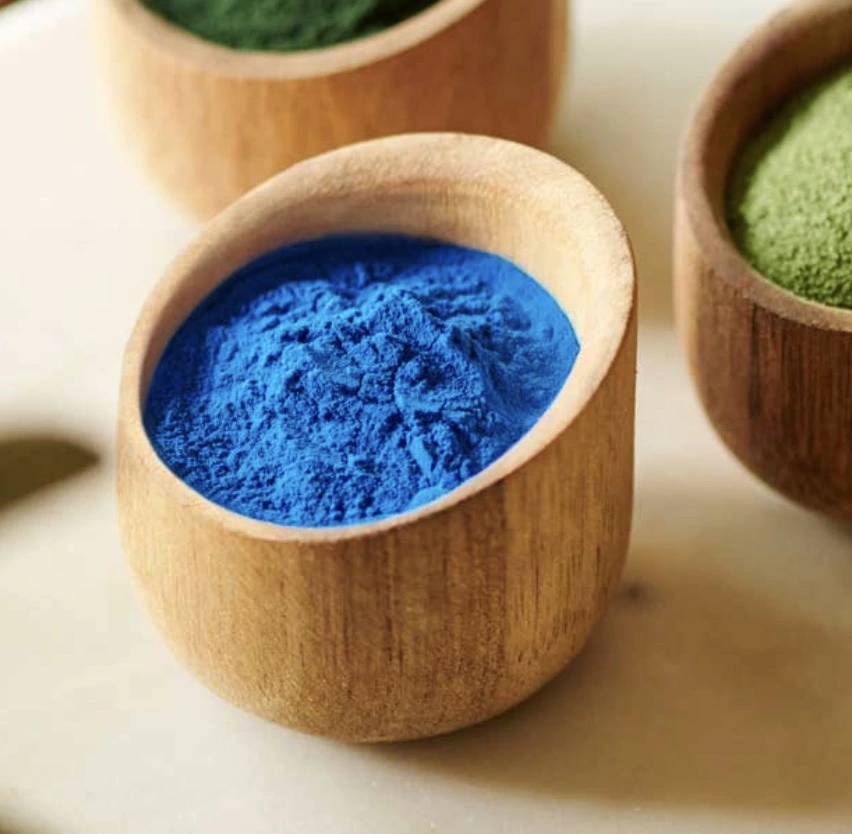Is E163(i) Red Radish Powder the Future of Natural Coloring?
In recent years, there has been a growing demand for natural food colorants as consumers become more health-conscious and wary of synthetic additives. Among these natural alternatives, Red Radish Powder E163(i) has emerged as a promising option for food and cosmetic manufacturers. This vibrant, plant-based colorant offers numerous benefits while addressing concerns associated with artificial dyes. Let's explore why E163(i) Red Radish Powder might just be the future of natural coloring.

Benefits of Red Radish Powder E163(i) for Food and Cosmetics
Red Radish Powder E163(i) boasts an array of advantages that make it an attractive choice for both food and cosmetic applications. Its natural origin and versatility have captured the attention of manufacturers seeking clean label solutions.
Vibrant and Stable Color
One of the most striking features of E163(i) Red Radish Powder is its ability to impart a rich, vibrant red hue to various products. This natural colorant exhibits remarkable stability across a range of pH levels, making it suitable for diverse applications. The color intensity can be easily adjusted by varying the concentration, allowing manufacturers to achieve the desired shade for their products.
Clean Label Appeal
As consumers increasingly scrutinize product labels, the use of E163(i) Red Radish Powder allows manufacturers to maintain a clean label. This natural colorant can be listed simply as "red radish extract" or "vegetable juice for color," appealing to health-conscious consumers seeking products with recognizable ingredients.
Antioxidant Properties
Beyond its coloring capabilities, Red Radish Powder E163(i) contains anthocyanins, which are powerful antioxidants. These compounds have been associated with various health benefits, including anti-inflammatory and cardiovascular protective effects. By incorporating this natural colorant, manufacturers can potentially enhance the nutritional profile of their products.
Versatility in Applications
E163(i) Red Radish Powder demonstrates remarkable versatility across a wide range of applications. In the food industry, it can be used to color beverages, confectionery, dairy products, and baked goods. Its water-solubility makes it particularly suitable for liquid-based products. In cosmetics, this natural colorant can be incorporated into lipsticks, blushes, and other color cosmetics, offering a safer alternative to synthetic dyes.

How E163(i) Red Radish Powder Compares to Synthetic Dyes?
As the food and cosmetic industries shift towards more natural ingredients, it's crucial to understand how E163(i) Red Radish Powder stacks up against traditional synthetic dyes.
Safety Profile
One of the primary advantages of E163(i) Red Radish Powder over synthetic dyes is its superior safety profile. Unlike some artificial colorants that have been linked to adverse health effects, red radish extract is derived from a natural, edible source. This makes it a preferable option for consumers concerned about potential long-term health impacts of synthetic additives.
Environmental Impact
The production of Red Radish Powder E163(i) has a significantly lower environmental footprint compared to synthetic dyes. As a plant-based product, it is biodegradable and renewable. The cultivation of radishes for colorant extraction can be integrated into sustainable agricultural practices, further reducing its ecological impact.
Regulatory Advantages
E163(i) Red Radish Powder enjoys favorable regulatory status in many countries. It is approved for use in the European Union under the E-number E163 and is considered a color additive exempt from certification by the U.S. Food and Drug Administration. This regulatory acceptance facilitates its incorporation into a wide range of products without the need for extensive safety testing required for new synthetic dyes.
Color Intensity and Stability
While synthetic dyes often offer superior color intensity and stability, advancements in extraction and processing techniques have significantly improved the performance of E163(i) Red Radish Powder. Modern formulations can achieve vibrant hues that remain stable under various processing conditions, narrowing the gap with synthetic alternatives.

Why E163(i) Red Radish Powder Is Gaining Popularity in Natural Products?
The rising popularity of E163(i) Red Radish Powder in natural products can be attributed to several factors that align with current consumer trends and industry priorities.
Consumer Demand for Natural Ingredients
Today's consumers are increasingly seeking products with natural, recognizable ingredients. Red Radish Powder E163(i) meets this demand by offering a colorant derived from a familiar vegetable source. Its presence on product labels reassures consumers that they are choosing a natural alternative to synthetic dyes.
Clean Label Movement
The clean label movement has gained significant traction in recent years, with manufacturers striving to simplify their ingredient lists. E163(i) Red Radish Powder supports this trend by allowing companies to replace complex-sounding synthetic colorants with a straightforward, natural option.
Functional Benefits
Beyond its coloring properties, E163(i) Red Radish Powder offers potential health benefits due to its antioxidant content. This dual functionality as both a colorant and a nutritional ingredient makes it an attractive option for manufacturers looking to enhance the perceived value of their products.
Technological Advancements
Ongoing research and development in extraction and stabilization techniques have improved the performance of E163(i) Red Radish Powder. These advancements have expanded its applicability across various product categories, making it a viable alternative to synthetic dyes in an increasing number of formulations.
Sustainability Initiatives
As companies focus on improving their sustainability credentials, the use of plant-based colorants like E163(i) Red Radish Powder aligns with corporate social responsibility goals. Its renewable nature and potential for local sourcing contribute to a more sustainable supply chain.

Conclusion
In conclusion, E163(i) Red Radish Powder represents a promising solution for manufacturers seeking natural coloring options. Its numerous benefits, including vibrant color, clean label appeal, and potential health advantages, position it as a strong contender in the future of natural colorants. As consumer demand for natural products continues to grow and technological advancements further enhance its performance, Red Radish Powder E163(i) is poised to play an increasingly significant role in both the food and cosmetic industries.
For more information on E163(i) Red Radish Powder and other natural plant extracts, please contact us at info@yanggebiotech.com. Our team of experts is ready to help you find the perfect natural coloring solution for your products.
References
1. Giusti, M. M., & Wrolstad, R. E. (2003). Acylated anthocyanins from edible sources and their applications in food systems. Biochemical Engineering Journal, 14(3), 217-225.
2. Rodriguez-Amaya, D. B. (2016). Natural food pigments and colorants. Current Opinion in Food Science, 7, 20-26.
3. Sigurdson, G. T., Tang, P., & Giusti, M. M. (2017). Natural colorants: Food colorants from natural sources. Annual Review of Food Science and Technology, 8, 261-280.
4. Wallace, T. C., & Giusti, M. M. (2015). Anthocyanins. Advances in Nutrition, 6(5), 620-622.
5. Wrolstad, R. E., & Culver, C. A. (2012). Alternatives to those artificial FD&C food colorants. Annual Review of Food Science and Technology, 3, 59-77.

Based on your location and order quantity, you will have the opportunity to receive a limited time free shipping promotion!

Who we are


